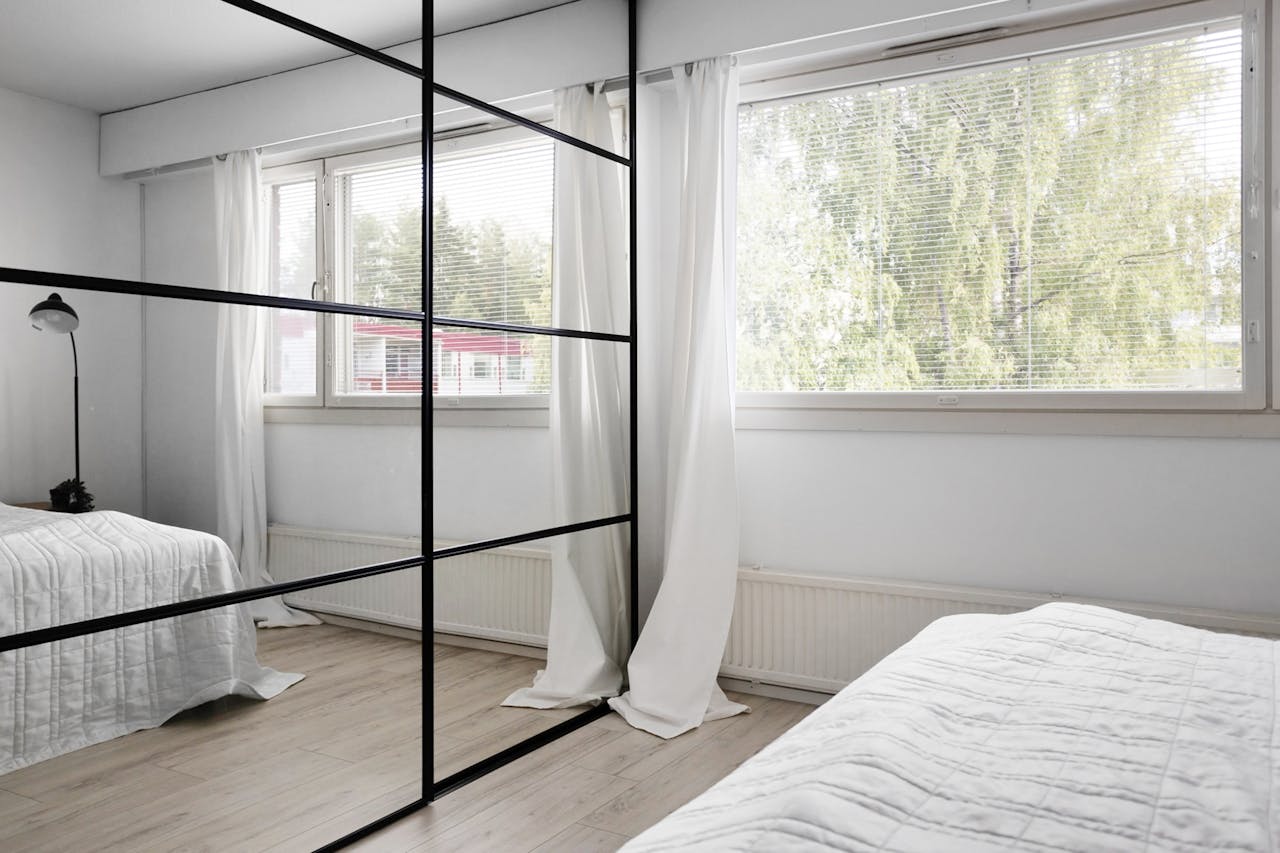Have you ever wondered how a simple mirror can have such a considerable impact on your interior decoration? Mirrors are much more than a functional tool to see yourself reflected. They are a powerful element that can add style, depth, and light to any space.
Mirrors are one of the essential objects in any home. They also decorate the walls of many places like offices, stores, and even museums since it is an object with an interesting historical background. Today, you will learn how the evolution of mirrors has been until today, what modern mirrors are like, and other interesting facts.

What is a Mirror?
It is a polished surface in which light and the image in front of it reflect according to the laws of reflection. Thanks to this phenomenon you can see your image reflected in a mirror. It is crucial to understand how it works to learn more about the history of the mirror.
The flat mirror is the most common of all. You can also find other types of mirrors, like curved ones, which in turn can be concave or convex. Curved mirrors show you enlarged, diminished, or distorted images depending on various factors. There are thousands of mirror designs on the market, and currently, there are even modern or smart mirrors that go beyond simply reflecting an image.
Light is a fundamental element in interior decoration, and mirrors are crucial in the distribution of objects. By reflecting light, mirrors can increase the brightness in a room, especially those with little natural lighting.
Placing a mirror near a window will allow light to reflect and spread throughout the space, creating a feeling of clarity and brightness. These objects are also decorative elements that can add style and elegance to any room. You will see a wide variety of designs and frames available on the market, allowing you to find the perfect mirror to complement your decorating style.
Mirror History
Although different cultures independently created mirrors at distinct times in history, the true inventor of the mirror is nature. While the modern mirror originated in the 19th century, surfaces that gave off reflections have existed long before that.
In 1835, German chemist Justus von Liebig developed a process in which he applied a thin layer of silver to one side of a glass panel. This technique changed over time, simplifying the mass production of mirrors in other parts of the globe.
Allegedly, the inhabitants of what is now Turkey created the first mirrors from polished obsidian (volcanic glass) about 8,000 years ago, and from then, different cultures began to use several types of minerals to make the mirror in its most artisanal form.
Mirrors are objects that reflect almost all the light that hits their surface. Due to this phenomenon, we can see ourselves reflected in them. In the 16th century, people began to use mirrors as room artifacts, and it was not until the 17th century that they started making large mirrors, becoming prominent decorative pieces in living rooms.
Types of Mirrors, Shapes, and What Are Their Uses
There are mainly two main types of mirrors. One is the flat mirror, and the other is the curved mirror. So, here you will learn about the differences between both and how, within the curved mirror, you find two more: the convex and the concave.
Flat Mirror
The plane mirror is a smooth surface, and specular reflection will occur when light passes through, which means that the angle of incidence is equal to the reflection angle of the normal line.
That is a type of mirror you can find in the fitting rooms of clothing stores, hair salons, or also, the tall, flat mirrors that many people place in their bedrooms to see how their clothes fit (or for dressing rooms). You can also find it in car mirrors.
Curved Mirror
These are the concave mirror and the convex mirror. A convex mirror is curved and has its center closer to the incoming light than its edges. The center of the concave mirror is farther from the incoming light than its edges.
Also, the concave mirror has a reflective area with an inward curvature, thanks to which it manages to magnify the images it reflects, like magnifying mirrors used in makeup and telescopes. As for convex mirrors, we often see them in parking lots because they diverge light and help to obtain a wider view than flat mirrors.

Modern Mirrors
Modern mirrors take into account not only functionality but also aesthetics. These types of mirrors usually emanate white light on the back, which helps to have a clearer image when looking at it. Additionally, thanks to their type of installation, they generally appear to float on the wall. Some of these modern mirrors allow you to adjust the intensity of the light, or they can also be operated, turned on and off remotely via Bluetooth connection.
One of the most notable benefits of these mirrors is their ability to make a space look bigger and wider. Strategically placing mirrors in a room can create the optical illusion of depth and expansion. For example, if you have a small or narrow room, placing a large mirror on a wall can visually open up the space and make it appear more spacious. Explore a variety of options here.
Smart Mirrors
They are usually backlit, rectangular in design and have many functionalities: built-in speaker, customization of LED lighting, the possibility of viewing weather data in real time through a small information screen and also multimedia content from different platforms such as Netflix, YouTube, or Spotify.
Conclusion
Mirrors have been used for hundreds of years so people can see their reflection, and also to decorate spaces. These objects have adapted to the needs of their owners, and that is why today there are different varieties, such as the flat and concave mirrors. A mirror at home can help create a sense of spaciousness and improve lighting. Additionally, if you get a smart mirror, it will also make your life easier.